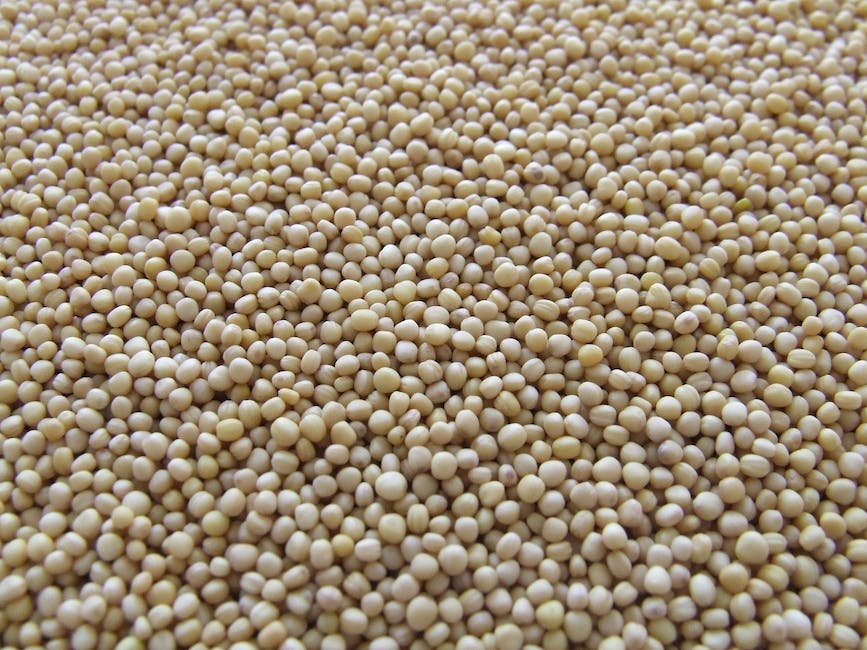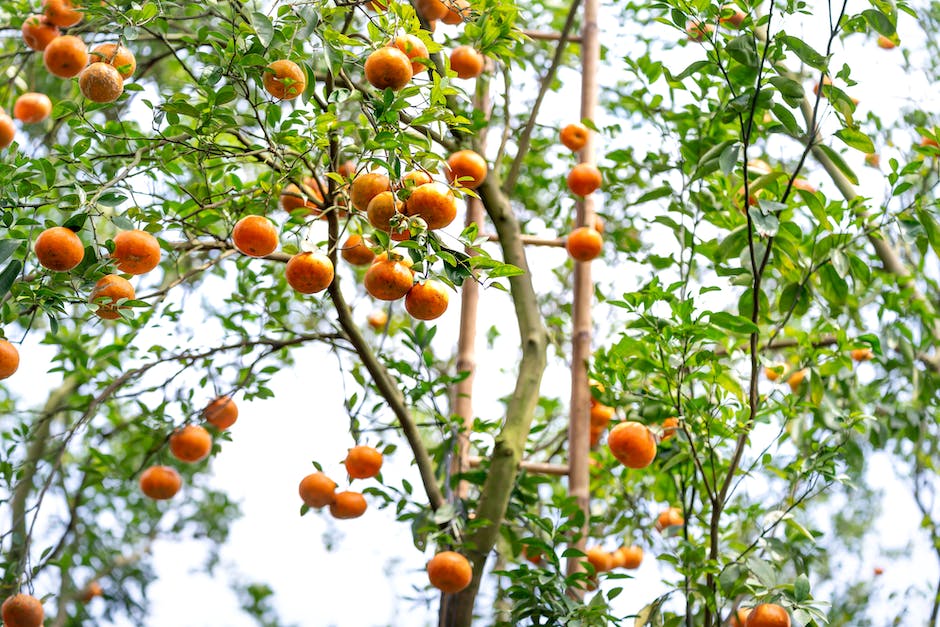Your Comprehensive Guide to Planting an Orange Seed

Empowering ordinary individuals to create their own lush oasis of orange trees is an endeavor that is not only feasible but can also be intensely rewarding. In the heartland of America, you too can embark on this journey of cultivation and harvest by starting your first orange seed. There’s a substantial satisfaction that comes from understanding the germination process, watching as your seedling sprouts a root, and finally emerges into the world as a young plant. This journey will open your eyes to the challenges and triumphs of planting, focusing particularly on the intricacies of soil preparation and planting, while also offering valuable insights into how to provide optimum care for your growing orange tree.
Understanding the Germination Process
Title: The Unseen Magic of Seed Germination: Kickstarting your Orange Tree Journey
Embrace the humble beginnings of your orange tree’s life: seed germination. This crucial first step in the beautiful dance of creation is an orchestra of the forces of nature at play. Let’s delve into it and understand why seed germination holds such significance in cultivating a healthy, fruitful orange tree.
Seed germination is akin to flipping a switch to bring a dormant seed to life. Each tiny speck holds the potential of a germling, eagerly awaiting the right circumstances to bloom. Proper water, temperature, and oxygen levels are key to harnessing this dormant energy. Orange trees, in particular, demand patience and care during this delicate initiation. Germinated seeds set the perfect cornerstone for a strong, blossoming orange tree.
At the heart of seed germination is the metabolic awakening of the embryo embedded within the seed. As the seed hydrates, it sets off the metabolic processes that fuel the growth of the seedling. This sprint of growth relies on the nutrients stored within the seed itself. As the water seeps into the seed, enzymes break down starches and proteins to nourish the growing seedling. And an orange tree, good folks, does demand its share of nutrition in this vital stage!
Germination also acts as a checkpoint, ensuring that your orange tree will have the best possible start. Any premature or faulty germination could lead to weak seedlings, susceptible to disease and poor growth. The patience and care you invest during the germination process reward you with a healthy sprout, enthused and equipped for growth.
But the wonder of germination and the promise it brings doesn’t end here. It’s a testament to the tree’s acclimatization potential. Seeds that germinate and grow in specific local conditions promise hardier trees, accustomed to the local climate and soil.
Now, the real excitement lies in the physics of germination. Harnessing just water, the seed is able to heave the earth’s weight and surface, reaching out for sunlight. This power-packed process sets the stage for an orange tree that’s resilient, ready to stand tall through the seasons!
Growing an orange tree from a germinated seed presents the beautiful full circle of life, right from the orange, you’d once relished, to a flowering tree bearing fruit for years to come. Seed germination is the ticket granting entry into this enthralling journey.
So, let’s give these tiny powerhouses their due credit. Nurture the seeds right, savor the preliminary excitement of germination, and watch nature unleash its wonders in form of an orange tree, splendid in each sunrise, graceful under each sunset – each orange like a golden trophy of nature’s miracles. The joys start early, and the rewards are lasting. After all, we are setting the stage for an orange tree here! Enjoy the process and embrace the challenges, knowing seed germination’s importance and why each tender sprout holds a special promise.

Soil Preparation and Planting
From the budding orange seed to a sizeable fruit-bearing tree, the journey is a delight, both for the observer and the nurturer. To ensure a successful venture into citrus farming, it’s essential to pay heed to soil preparation, planting procedure, and provide the utmost care. Let’s cultivate these insights and green thumbs further by diving into in-depth orange seed plantation.
When considering soil preparation, the emphasis should primarily be on soil fertility and pH levels. Citrus trees prefer well-drained soil with a pH level of 6.0 to 7.5. Hence, before sowing your seeds, it is best to test the soil’s pH level. You can easily find pH test kits at your local gardening store. If the pH is too low, meaning it is acidic, add some lime to neutralize it. Conversely, if it is too alkaline, sulfur can be added to bring it down to the desired level.
Besides pH, soil constitution plays a significant role. If the soil is clayey or sandy, consider amending it with organic matter. This addition improves the soil’s water-retaining capabilities and enhances its nutrient composition. Compost, manure, or leaf mold can serve as fantastic organic matter. Once the soil is fertile and has an optimal pH level, you can proceed with planting the orange seed.
Proper placement of the orange seed is vital. Start by digging a hole, make it two times as wide and deep as the size of the seed. The extra room gives roots enough space to spread out and establish. Place the seed into the hole, taking care not to damage the root. The root should face downwards while the top part that bears the shoot should be upwards. Cover the seed with soil, ensuring that the uppermost part of the seed is at the ground level. It is this arrangement that allows the shoot to grow upwards, searching for sunlight, while the roots stabilize and start drawing nutrients.
Once planted, water the seed immediately and maintain consistent moisture level in the coming weeks. While the orange sapling is gaining strength, it’s vital to keep the soil neither too dry nor too waterlogged. Therefore, regular but measured watering is key. Limit the water supply, if you notice the sapling’s leaves turning yellow, as this signals overwatering.
A layer of mulch spread over the soil can be beneficial to retain moisture, mitigate weed growth, and regulate soil temperature. An organic mulch made of grass clippings or compost helps further enrich the soil.
Step back and marvel at the breathtaking spectacle of the sprout transforming into a sapling and growing into a tree over time. It’s a slow dance, a test of patience backed by your nurturing skills and horticulture knowledge.
So there you have it – the fundamental steps to prepare fertile soil and correctly plant an orange seed. Now you’re equipped to enchant your garden with the magic of citrus blossoms. Few things in life rival the thrill of seeing the first hint of green poking through the soil, indicative of life unfurling. Remember, the tree’s strength, the lushness of its foliage, or the sweetness of its fruit are a reflection of the care that went into its growing. So, let the magic of gardening unfold, and let the zesty aroma of orange blossoms fill your garden soon!

Orange Tree Care
Moving beyond the exhilarating period of germination and having successfully nurtured your orange seed into a fledgling, it’s time to shift focus. Warm, balmy days with a sapling in sight are just around the corner. Brace for immense satisfaction as you embark upon the rewarding endeavor of citrus cultivation.
Start by playing your part in creating a co-conspirator for your tree – a well-prepared and suitable soil. After all, the key philosophy behind robust citrus growth lies in the soil structure and pH balance. Ideally, you’d want a slightly acidic pH around 6 to 8 for your citrus friend to thrive. The effort of enriching your garden soil with organic compost would pay off exceptionally. So feel free to be generous with well-rotted manure or garden compost – your new orange tree would thank you eventually.
Once the housing conditions are perfect, your baby tree is ready for planting. Dig a hole twofold wider and slightly deeper than your sapling’s root system. Paying attention to the hole size and root placement is crucial – positioning the root collar at ground level is a target to aim for.
Post planting, moisture management becomes your new mantra. Insufficient or excessive watering can become hazardous for young saplings. Therefore, remember – keep the top few inches of soil evenly moist, but not water-logged.
Mulching can be a remarkable ally to your watering efforts. A generous application around the base of your plant can help retain vital moisture and regulate soil temperatures, providing a nurturing environment for your orange tree to flourish.
Admittedly, citrus trees demand ample patience with their slow growth. It might even take several years to yield the first fruit. But each passing day will bring you closer to a tree that’s a living testament to your dedication and love.
At every stage from sapling to full-grown tree, care, monitoring, and timely attention will not just ensure steady growth but raise a barrier against diseases. Notably, citrus trees are occasionally prone to pests or diseases. Maintaining a clean and tidy area around the tree and regular foliage checks can go a long way in mitigating potential threats.
And finally, comes the most exciting part – observing your tree gradually evolve into a robust, fruit-bearing specimen. The first blossom, the first fruit, the sweet smell that fills the air – these moments will resonate with sheer joy!
In conclusion, your dedication turns a mere seed into a thriving life source, laden with sweet, juicy fruits – indeed a splendid sight to behold. So, immerse yourself in this enchanting journey of growing a robust orange tree. The satisfaction gained from this form of gardening is unparalleled. After all, it’s not just about nurturing a tree, but fostering life and reaping the rewards sown through love and patience.

With a wise investment of time, energy, and resources, you can expertly use the information provided to turn a humble orange seed into a flourishing, fruit-bearing tree right in your own backyard. You’ll learn to trust in the delicate yet resilient germination process, provide the healthiest soil mixtures, and nurture your seedling with appropriate watering, sunlight, and protective measures against pests and diseases. The skills and knowledge that you have acquired are just the beginning of your budding journey into the world of orange tree cultivation. Here’s to nurturing life, from its humble origins as a seed, right up to its towering heights as a thriving apple tree, delivering the sweet fruits of your labor right into your hands.



